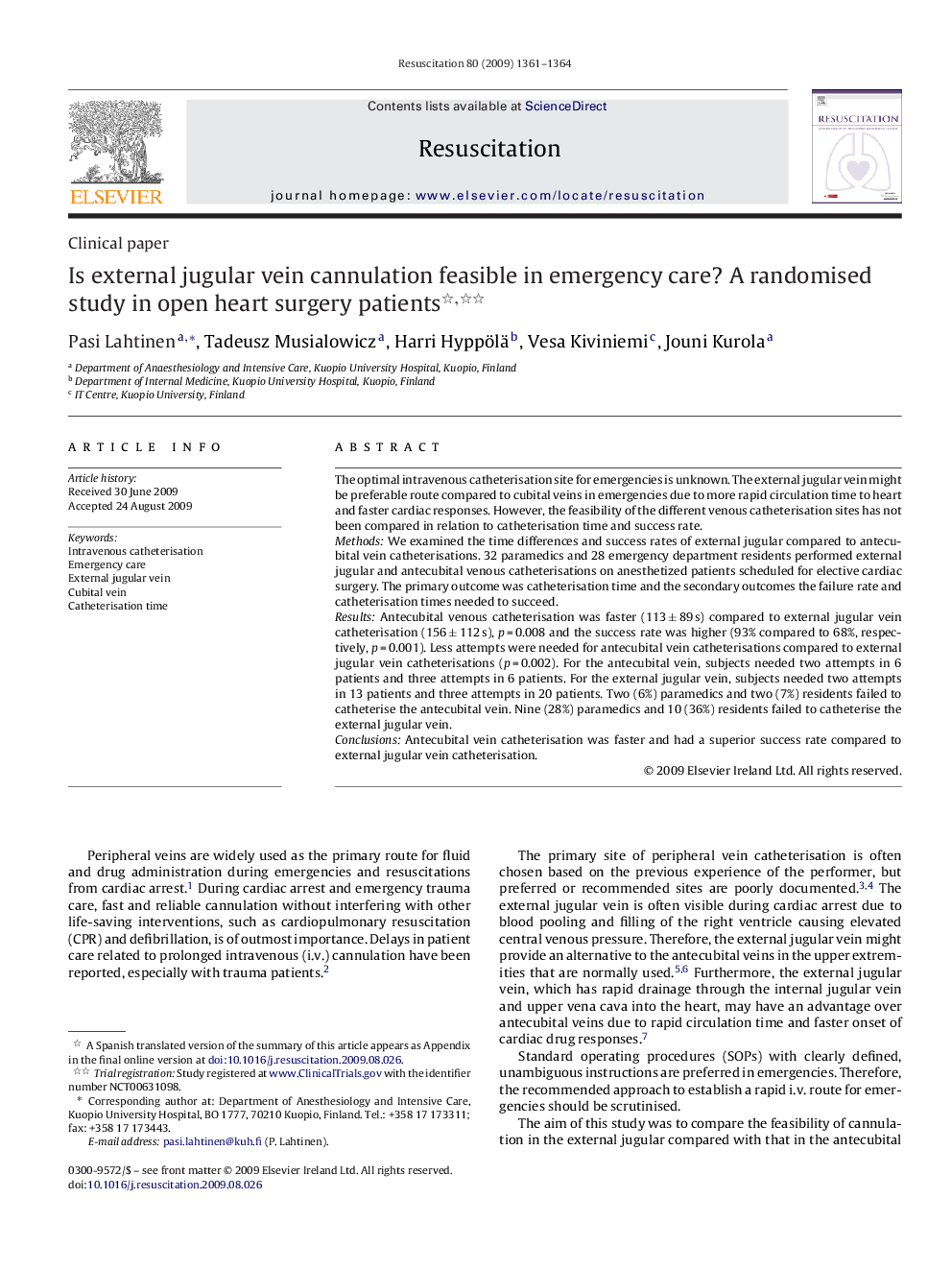| Article ID | Journal | Published Year | Pages | File Type |
|---|---|---|---|---|
| 3009373 | Resuscitation | 2009 | 4 Pages |
The optimal intravenous catheterisation site for emergencies is unknown. The external jugular vein might be preferable route compared to cubital veins in emergencies due to more rapid circulation time to heart and faster cardiac responses. However, the feasibility of the different venous catheterisation sites has not been compared in relation to catheterisation time and success rate.MethodsWe examined the time differences and success rates of external jugular compared to antecubital vein catheterisations. 32 paramedics and 28 emergency department residents performed external jugular and antecubital venous catheterisations on anesthetized patients scheduled for elective cardiac surgery. The primary outcome was catheterisation time and the secondary outcomes the failure rate and catheterisation times needed to succeed.ResultsAntecubital venous catheterisation was faster (113 ± 89 s) compared to external jugular vein catheterisation (156 ± 112 s), p = 0.008 and the success rate was higher (93% compared to 68%, respectively, p = 0.001). Less attempts were needed for antecubital vein catheterisations compared to external jugular vein catheterisations (p = 0.002). For the antecubital vein, subjects needed two attempts in 6 patients and three attempts in 6 patients. For the external jugular vein, subjects needed two attempts in 13 patients and three attempts in 20 patients. Two (6%) paramedics and two (7%) residents failed to catheterise the antecubital vein. Nine (28%) paramedics and 10 (36%) residents failed to catheterise the external jugular vein.ConclusionsAntecubital vein catheterisation was faster and had a superior success rate compared to external jugular vein catheterisation.
